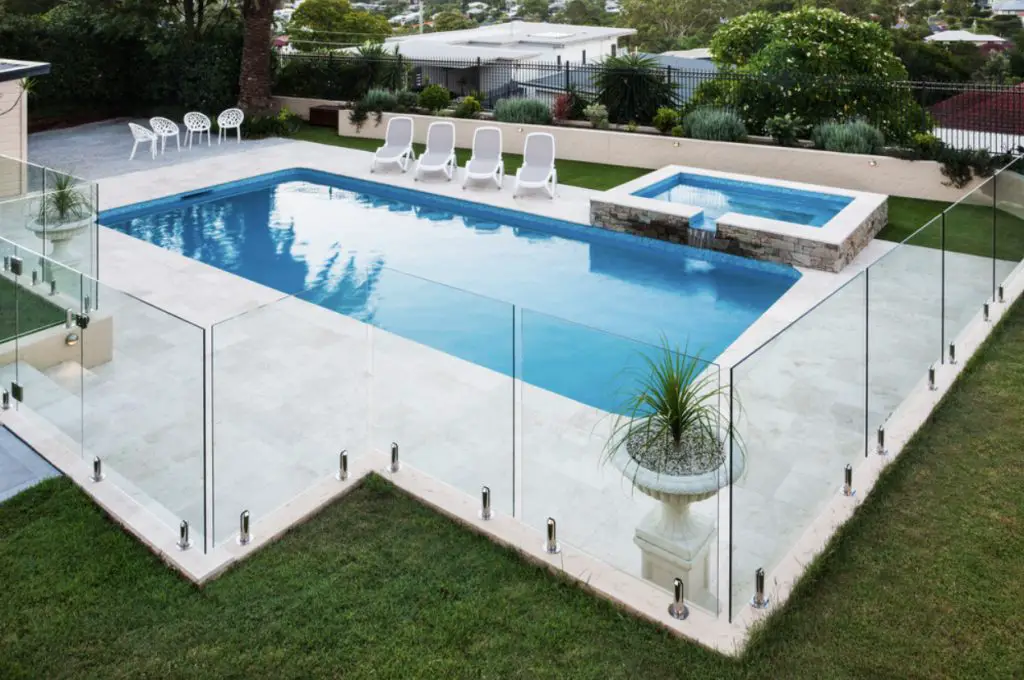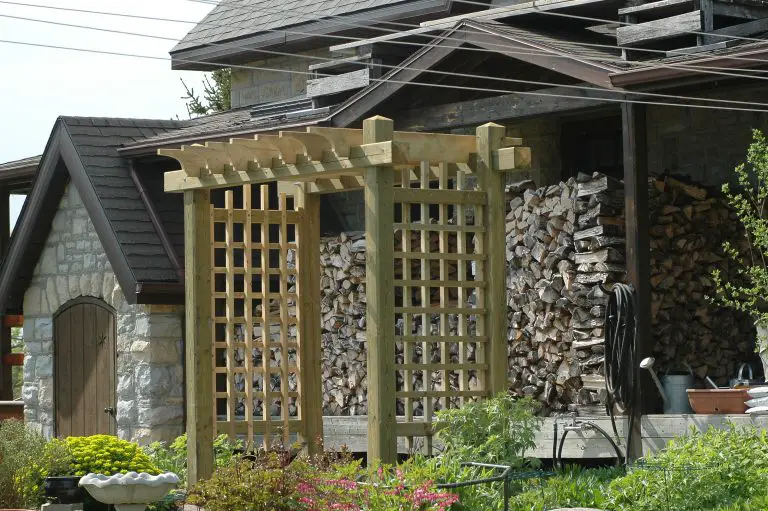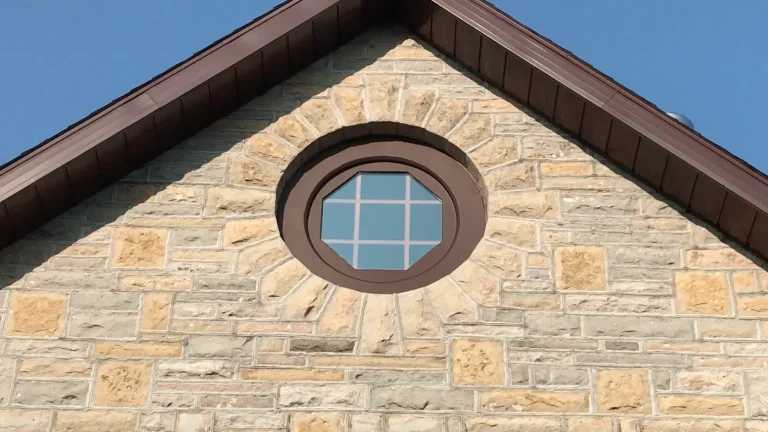Backyard swimming pools are a great addition to any home, providing an inviting space for family, friends and loved ones to enjoy a bit of fun in the sun during the warmer months of the year. However, even when your pool is out of commission in the colder seasons, the danger of swimming pool accidents is constant. As a pool owner, you probably know how important it is to make sure your swimming area is safe, especially if you have children or pets at home. One great way to do that is by installing a pool fence.

Whether you’re building a new home, or simply looking to invest in an added level of safety and security for an existing backyard pool, you’ll learn everything you need to know about pool fencing in this handy guide. Read on to find out more.
Understanding The Laws Surrounding Pool Fences
First and foremost, it’s important to note that all home pools in most places are required to comply with pool safety law standards. Pool fence regulations vary from place to place and are continually being updated to improve the safety around water. In Victoria, NSW, South Australia, Tasmania, Western Australia and the ACT, for instance, all pools must adhere to the current Australian Standard AS1926-2012. These regulations are aimed at preventing drowning accidents and ensuring pool safety and you’ll find similar laws in most places.
Key points from the AS1926-2012 pool fencing laws include:
Pool Fencing Height: The minimum height for a pool fence, whether it be aluminium, steel, or glass pool fencing, is 1.2 metres (47 1/4″ inches) from the finished ground level on the outside of the fence. If the fence has horizontal components, such as rails, the spacing between them should not exceed 100mm (4 inches) to prevent climbing.
Gates: Pool gates must be self-closing and self-latching. The gate must swing out, away from the pool area, and the latch should be located at least 1.5 metres (60 inches) above the ground, or on the inside of the gate if it’s less than 1.5 metres (60 inches) high.
Non-Climbable Zone (NCZ): A non-climbable zone is an area around the pool fence where there should be no objects or structures that could be used to climb over the fence. The NCZ extends 90cm (35 1/2 inches) inside the fence and 30cm (12 inches) outside the fence, or to any other barrier, such as a wall, that acts as a pool fence.
Pool Fence Construction: The pool fence should be constructed to be sturdy and durable, and it should not have gaps, holes, or openings that a child could crawl through or get stuck in. The materials used should comply with the requirements of the standard, and any joints or connections should be securely fixed.
Windows and Doors: Any windows or doors that form part of the pool fence, including those in a building that serves as a pool fence, should be compliant with the standard. For example, windows that open onto the pool area should have restricted openings or be fitted with bars or screens to prevent access by young children.
It’s important to note that the AS1926-2012 pool fencing laws and all standards everywhere are a minimum standard, and local regulations may have additional requirements. It is crucial to check with your local council or building authority to ensure that your pool fence complies with all applicable laws and regulations in your area. Failure to comply with pool fencing regulations can result in fines, legal liabilities, and even tragic accidents.
Why Are Pool Fences Important?
One of the main reasons why pool fencing is so important is to prevent accidental drowning, especially among young children. They provide an effective physical barrier that can prevent unsupervised access to pools, spas, jacuzzis and other bodies of water. In addition to preventing drowning accidents, pool fencing also helps to keep pets, wildlife, and unauthorised individuals out of the pool area. This can help prevent damage to the pool and its equipment, reduce the risk of accidents, and prevent unwanted access to your property. A well-constructed pool fence with the right height, material, and design can effectively deter unauthorised entry and keep your pool area safe and secure.
Moreover, in the unfortunate event of a drowning or pool-related accident, liability and legal implications can arise. Having a compliant pool fence in place can help homeowners mitigate potential legal liabilities, as it demonstrates a proactive effort to provide a safe environment for pool users. It can also serve as evidence of responsible pool ownership, should any legal disputes or claims arise.
What Are The Different Types Of Pool Fences?
Pool fences come in a wide variety of styles and materials, making it easy to find the perfect fence for your needs. Each has its pros and cons in terms of durability, maintenance, aesthetics, and cost. There are several types of pool fences available that comply with the AS1926-2012 pool fencing laws in Australia and similar regulations elsewhere. These include:
Glass Fencing: Glass fencing is a modern and stylish option for pool fencing that provides an unobstructed view of the pool area. It’s typically made of toughened safety glass (aka tempered glass), which is resistant to shattering, and is either frameless or semi-frameless. Frameless glass fencing uses minimal hardware, such as spigots, to hold the glass panels in place, giving it a sleek and seamless appearance. Semi-frameless glass fencing has a combination of glass panels and metal posts or rails.
Timber Fencing: Timber fencing is a natural and traditional option for pool fencing that can provide a warm and classic look. Timber fences can be made of different types of wood, such as treated pine or hardwood, and can be designed in various styles, such as picket, slat, or paling. One thing to note, however, is that timber fencing requires regular maintenance, such as staining or painting, to protect it from the elements and maintain its appearance.
Aluminium Fencing: Aluminium fencing is another popular choice for pool fencing as it is lightweight, affordable, and low-maintenance. It is made of aluminium extrusions and is available in various designs, such as flat-top, loop-top, or picket-style. Aluminium fencing can be powder-coated in different colours to match the aesthetic of the surrounding area.
Tubular Steel Fencing: Tubular steel fencing is a popular choice for pool fencing due to its durability, strength, and versatility. It consists of vertical steel bars with varying designs, such as vertical pickets, loop-tops, or spear-tops, and horizontal rails. Tubular steel fencing can be powder-coated in a variety of colours to suit different aesthetic preferences.
Benefits Of Installing A Pool Fence
Prevention of Accidental Drowning: The most critical benefit of installing a pool fence is to prevent accidental drowning, especially among young children who are at a higher risk.
Compliance with Laws & Regulations: By installing a pool fence that meets or exceeds the regulatory requirements, homeowners can ensure compliance with the law and avoid potential fines or legal liabilities.
Property Insurance Coverage: Some insurance companies may require the installation of a pool fence as a condition for obtaining or maintaining property insurance coverage. Installing a pool fence can help homeowners comply with requirements, ensuring protection for their property and assets.
Peace Of Mind: Knowing that your pool area is secure and protected by a pool fence can provide you with peace of mind. It alleviates worries about accidental drownings, unauthorised access, and potential legal liabilities.
Increased Property Value: Installing a pool fence can also add value to your property. Potential homebuyers with young children or pets may prioritise pool safety when looking for a home, and a properly installed and maintained pool fence can be a desirable feature that adds to the resale value of your property.
Pool Fence Installation & Maintenance
If you’re considering installing a pool fence, it is imperative that you seek out professional help. In other words, this is not the time for a DIY project for most homeowners. This is because proper installation and maintenance of a pool fence is crucial for ensuring its safety and effectiveness. Pool fence installation requires specific skills and expertise to ensure that the fence is sturdy, secure, and meets all safety requirements. Professional installers have the necessary experience and training to install the pool fence correctly, ensuring that it is properly anchored, has no gaps or openings that could allow access to the pool area, and that gates and latches are functioning properly.
Additionally, regular inspections and maintenance are necessary to ensure that the fence remains in good condition, with no gaps, rust, or other damage that could compromise its effectiveness or appearance. Professional pool fence installers can provide guidance on the recommended maintenance practices, such as regular inspections, cleaning, tightening of screws and bolts, and repairs as needed. They can also identify potential issues early on and address them promptly, preventing costly repairs or replacements down the line.
In A Nutshell
Long story short, pool fencing is of paramount importance for homeowners who own a swimming pool. By prioritizing pool safety through the installation of a proper pool fence, you can have peace of mind knowing that you have taken proactive measures to protect your loved ones and others, and have created a safe and responsible pool environment.












